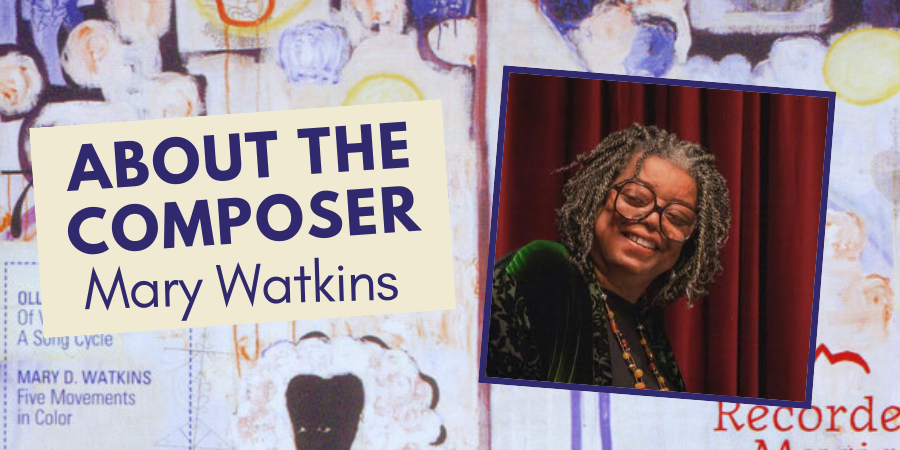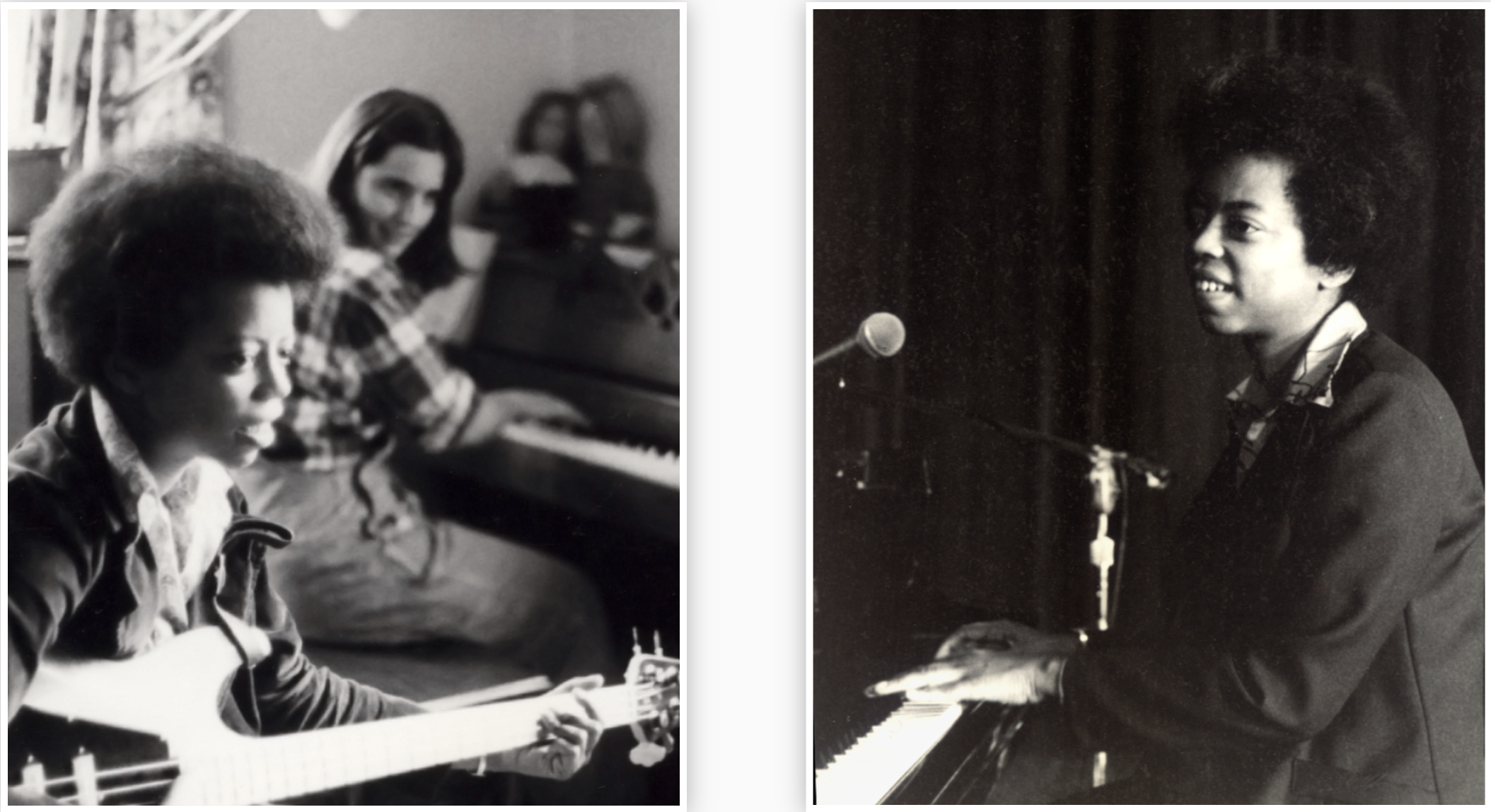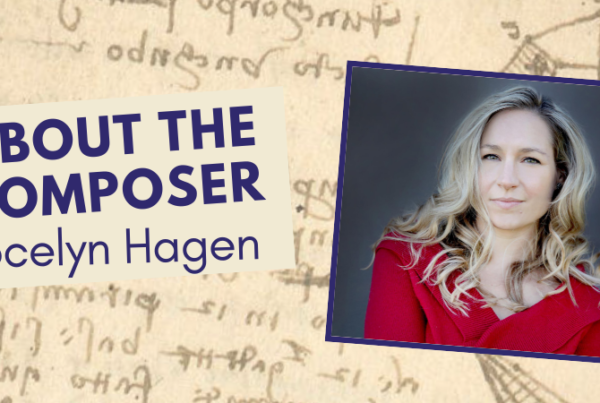
Trained in classical music at Howard University, Mary D. Watkins has composed three operas and has written for symphony orchestras, chamber and jazz ensembles, film, theatre, dance, and choral groups, in addition to being a popular recording artist for Olivia records in the 1970s.
Mary Watkins is an eclectic composer and pianist of the classical and jazz traditions, often incorporating one with the other or bringing the various styles of ethnic, blues, gospel, country, folk and pop music into her original works. Her versatility as a composer, arranger, pianist, and producer has led her to compose for symphony orchestra, chamber and jazz ensembles, film, and theatre.
Born in Denver, Colorado Watkins began playing piano at age four. By eight, she was accompanying a children’s choir and had begun to improvise and compose short pieces. In 1972 she received a Bachelor’s degree in Music Composition from Howard University in Washington, D.C. She later earned her living performing with jazz groups in the DC area and as Musical Director, Resident Composer and pianist for theatre and modern dance groups.

Mary’s deep respect for black history and culture led her to write operas: Dark River, based on the story of Civil Rights activist Fanny Lou Hamer and her work with the Student Nonviolent Coordinating Committee; Queen Clara, based on the life of the founder of the Red Cross, Clara Barton; and Emmett Till: The Opera, which tells the story of the 14-year-old African American who was lynched in Mississippi in 1955, after being accused of offending a white woman in her family’s grocery store.
Mary Watkins was one of the groundbreaking women of color who brought multiple disciplines to what became known as Women’s Music. Like much of the music that comes out of a community’s need to confront oppression and challenge stereotypes, Women’s Music created music that comes from a woman-identified perspective.
Five Movements in Color encompasses music of West Africa as well as many different musical styles and genres from the African diaspora. Watkins has said that the piece is an “epochal painting or poem about our journey as a [Black] people in [the United States].” The complete work includes improvisational sections, layered ostinatos and polyrhythms, and syncopation, all of which are characteristics found in various musics of West Africa and its diaspora.
The second movement, Soul of Remembrance, is often excerpted and played stand- alone. Of it, Watkins said, “I saw my own people in their long march to fully express themselves as fully human in a society when we were always boxed in.”
Mary was invited to be one of five African American composers to present their work with The New Black Music Repertory Ensemble of Chicago. The Ensemble’s series, Music of the African Diaspora, featured Mary’s Five Movements in Color.
Watch a short film about Mary Watkins in the video below!
The Flagstaff Symphony Orchestra will perform Five Movements in Color on April 12th, at 7:30 pm in Ardrey Auditorium.



